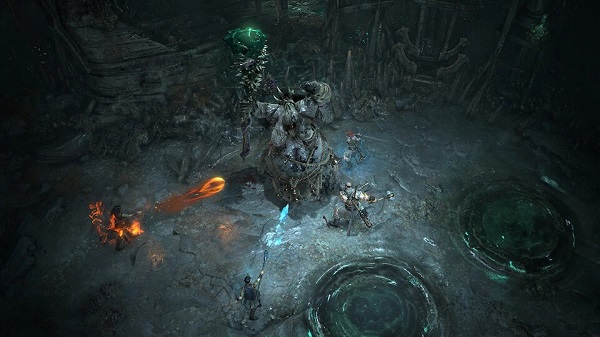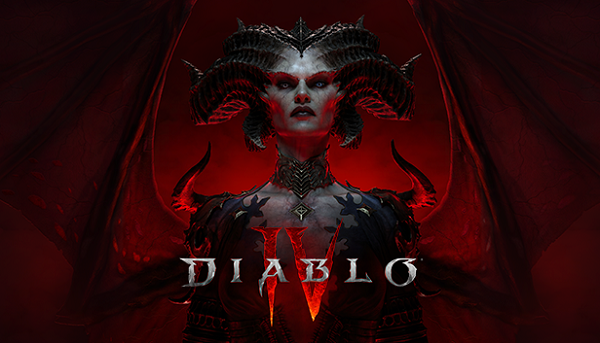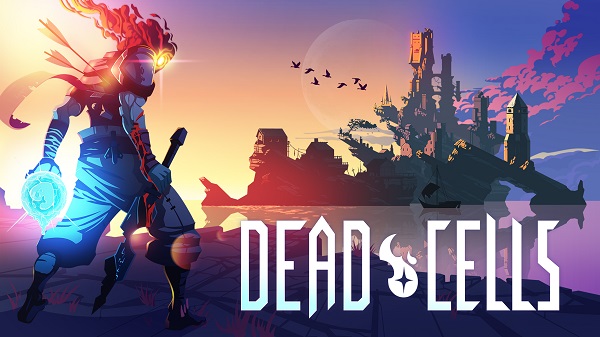Advertisement
Popular Now
Diablo IV, Blizzard Entertainment’s dark action RPG, pits players against a variety of formidable bosses that test skill, strategy, and preparation. From the grotesque Duriel to the iconic Lilith, these encounters are central to the game’s narrative and endgame challenges. Mastering boss fights requires understanding their mechanics, optimizing your character build, and employing effective tactics. This guide provides a comprehensive breakdown of how to tackle Diablo IV’s bosses, covering preparation, combat strategies, and specific approaches for different boss types across the game’s campaign and endgame. Whether you’re facing Main Campaign Bosses, World Bosses, or Uber Bosses, this article will equip you with the knowledge to emerge victorious.



Understanding Boss Types in Diablo IV

Overview of Boss Categories
Diablo IV features four primary boss types: Main Campaign Bosses, World Bosses, Dungeon Bosses, and Stronghold Bosses, with Uber Bosses reserved for the game’s toughest challenges on Torment difficulties. Each type presents unique mechanics and rewards. Main Campaign Bosses, like Lilith’s Lament, drive the story forward and are fought once per character. World Bosses, such as Ashava, are massive multiplayer events with timed spawns, while Dungeon and Stronghold Bosses offer repeatable challenges for loot and progression. Uber Bosses, like Uber Lilith, demand optimized builds and precise execution.Why Boss Mechanics Matter
Bosses in Diablo IV are designed with complex mechanics, including stagger bars, phase transitions, and unique abilities. The yellow stagger bar under a boss’s health fills through crowd-control effects like stun or freeze, temporarily disabling the boss and creating attack windows. Many bosses also have scripted mechanics, such as losing abilities after being staggered, which reduces fight difficulty. Understanding these mechanics is crucial for planning your approach and maximizing damage output.Preparing Your Character for Boss Fights
Optimizing Your Build
Before engaging any boss, ensure your character build is tailored for the fight. Focus on skills that deal high single-target damage for bosses, as opposed to area-of-effect (AoE) skills better suited for mobs. For example, a Barbarian might prioritize abilities like Hammer of the Ancients for burst damage, while a Sorcerer could lean on skills like Meteor for sustained DPS. Check your skill tree and allocate points to enhance survivability and damage against elite enemies.Gear and Resistances
Equipping gear with appropriate resistances is critical, especially for World and Uber Bosses. For instance, Ashava deals heavy poison damage, so crafting an Elixir of Poison Resistance can mitigate her clouds of toxins. Similarly, Grigoire inflicts lightning damage, requiring Topaz gems for resistance. Check boss-specific loot tables (e.g., from sources like Wowhead) to target gear with affixes that boost damage against elites or improve defensive stats. Upgrading gear at the blacksmith and socketing gems at the jeweler are essential steps.Consumables and Elixirs
Stock up on consumables like health potions and elixirs before a boss fight. Elixirs providing resistance to specific damage types (e.g., Poison Elixir for Duriel) can significantly reduce incoming damage. Additionally, ensure you have an “escape button” skill, such as a mobility or invulnerability ability, to dodge devastating attacks. For example, a Rogue’s Dash or a Druid’s Trample can help reposition quickly during chaotic encounters.Mastering the Stagger Mechanic
How Stagger Works
The stagger mechanic is a cornerstone of Diablo IV boss fights. By applying crowd-control effects like stun, freeze, or knockback, you fill the yellow stagger bar beneath the boss’s health. Once full, the boss enters a staggered state, becoming vulnerable and unable to act for a brief period. This window allows you to unleash your most powerful abilities without fear of retaliation.Strategies for Staggering
To maximize stagger, incorporate crowd-control skills into your build. For example, a Necromancer might use Corpse Tendrils to immobilize, while a Barbarian could rely on Ground Stomp. Timing these abilities is key—use them when the boss is preparing a major attack to interrupt it and build stagger. Be cautious, as some bosses have resistance to certain crowd-control effects, so test your skills early in the fight to identify what works.Facing Main Campaign Bosses

Lilith’s Lament: Act 1 Challenge
Encountered during “The Descent” quest in Act 1, Lilith’s Lament is one of the first major bosses players face. This demonic entity uses ranged shadow spells and a blood pool AoE attack. Stay mobile to avoid her predictable attacks, and take advantage of the large knight’s force field in the second phase to block her arena-wide wave attack. Focus on dodging her shadow bolts while dealing consistent damage.Andariel: Maiden of Anguish
Andariel, fought in Act 4 during “Anguish Incarnate,” is a returning Diablo series staple. Her fight occurs amidst a sandstorm, which can damage players, and she uses Rune Chains to trap you. Break these chains quickly to maintain mobility. Prioritize dodging her melee strikes and use AoE skills to clear summoned minions. High lightning resistance is recommended, as her attacks often incorporate electrical damage.Tackling World Bosses
Ashava: The Pestilent Threat
Ashava, located in The Crucible in Fractured Peaks, is a World Boss known for her poison clouds and forearm blade attacks. Up to 12 players can join this timed fight, making coordination key. Craft a Poison Resistance Elixir to mitigate her unavoidable poison clouds. Save mobility skills like Teleport or Leap to escape her sweeping blade attacks, and focus on dealing damage during stagger phases. Check spawn times via the in-game map to ensure you’re prepared.General World Boss Tips
World Bosses have segmented health bars with red arrows marking phase transitions, often introducing new mechanics. Stay alert for telegraphed attacks, such as Ashava’s poison pools, and position yourself to avoid AoE damage. Since allies can revive you, communicate with your team to prioritize survival over reckless damage. Ensure your level matches the recommended level for the boss to avoid being underpowered.Conquering Stronghold Bosses
Liberating Strongholds
Stronghold Bosses, like those in demon-infested overworld locations, guard areas that unlock side quests or dungeons upon defeat. Each Stronghold has unique objectives leading to the boss, such as clearing enemies or destroying structures. For example, the Stronghold Boss in Omath’s Redoubt requires defeating waves of enemies before facing the boss. These fights vary in difficulty based on your level and gear.Specific Strategies
Focus on completing Stronghold objectives efficiently to reach the boss with full resources. For melee-heavy bosses, maintain distance and use ranged attacks if possible. For bosses with minions, like the Nangari Deathworker in the Vessel of Hatred DLC, prioritize clearing adds to avoid being overwhelmed. Equip gear with bonuses to elite damage to speed up these encounters.Navigating Dungeon Bosses
Dungeon Boss Mechanics
Dungeon Bosses, found in Diablo IV’s repeatable dungeons, offer loot and experience but require careful navigation of their mechanics. For example, Mohlon, Snake Queen, in Mohlon’s Nest uses serpent-like attacks and poison AoE. Equip poison-resistant gear and focus on interrupting her summons with crowd-control skills. These bosses are ideal for farming specific loot, so check dungeon-specific guides for targeted rewards.Farming Efficiency
To farm Dungeon Bosses efficiently, optimize your build for speed and survivability. Use movement speed buffs to clear dungeon trash mobs quickly, reserving high-damage skills for the boss. If playing in a group, coordinate roles—designate one player to handle adds while others focus on the boss. This approach maximizes loot drops and minimizes downtime.Defeating Uber Bosses
Uber Lilith: The Ultimate Challenge
Uber Lilith, available only in Torment difficulties, is Diablo IV’s pinnacle boss. Her fight demands a perfectly optimized build and deep knowledge of her mechanics. She uses a mix of shadow, fire, and AoE attacks, with phase transitions that escalate in complexity. Study her attack patterns, such as her wing slams and blood waves, and time your dodges carefully. Staggering her is critical to surviving her high-damage phases.Summoning and Preparation
Uber Bosses like Duriel and Grigoire require specific materials to summon, often dropped by lower-tier bosses. For example, summoning Duriel in the Gaping Crevasse requires materials from Varshan and Grigoire. Farm these materials in Nightmare Dungeons or Helltides, and ensure your gear has maxed-out resistances (e.g., Emeralds for Duriel’s poison). Solo players should practice on lower difficulties to master mechanics before attempting Torment.Advanced Combat Techniques
Positioning and Movement
Effective positioning is crucial in boss fights. Stay out of AoE zones, like Duriel’s Belly Belch or Ashava’s poison clouds, and use terrain to your advantage. For example, in tight arenas like Duriel’s, kite the boss to create space for dodging. Maintain awareness of your surroundings to avoid being cornered, especially against bosses with teleportation abilities like the Eidolon of Jualin.Cooldown Management
Manage your skill cooldowns to ensure key abilities are available for critical moments. For instance, save your ultimate ability for stagger phases to maximize damage. Use potions strategically, timing them for when health drops below 50% to avoid wasting them. Practice timing your crowd-control skills to interrupt boss attacks, such as Andariel’s Rune Chains, to maintain control of the fight.Team Play and Coordination


















